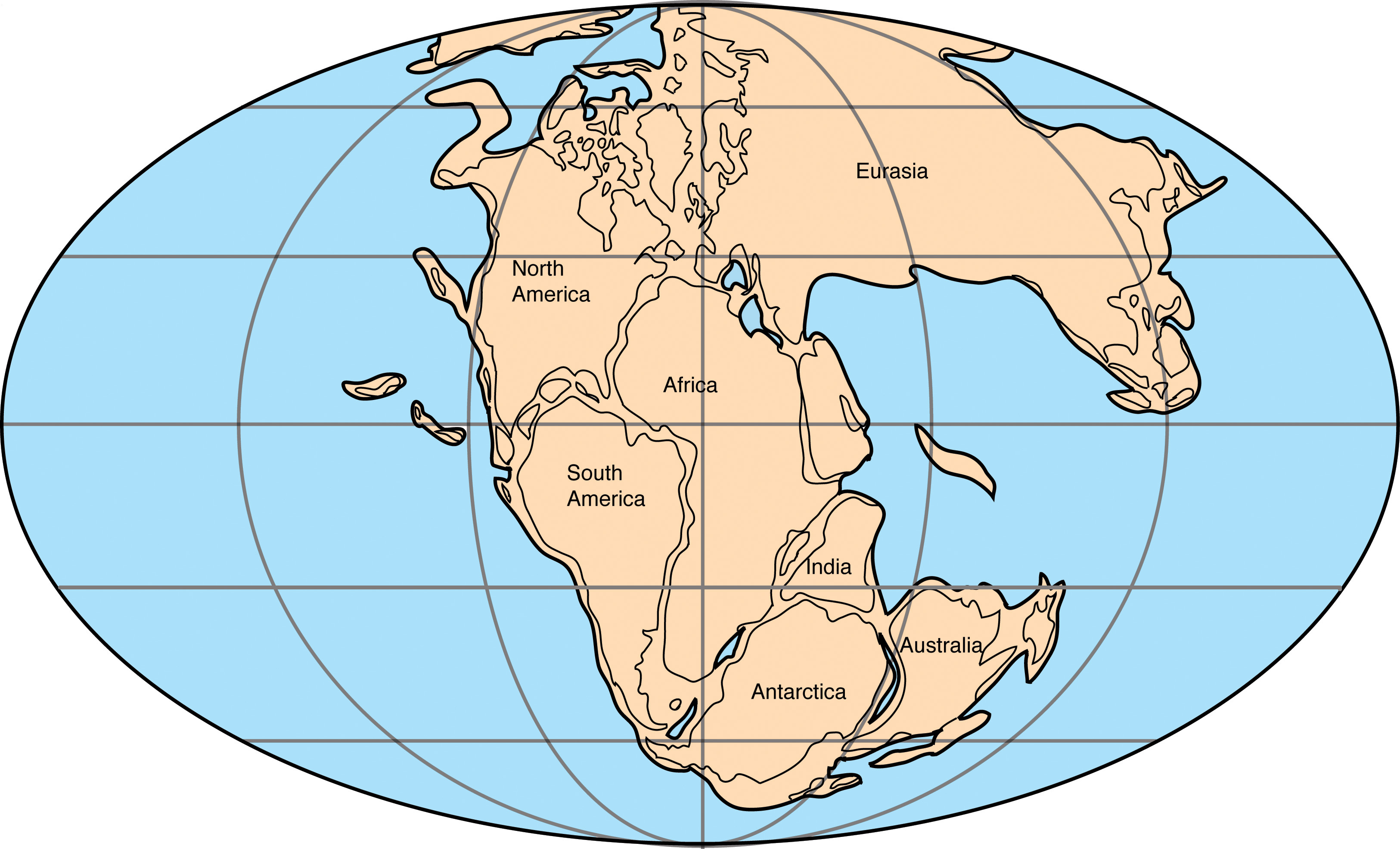 |
| Image of Pangaea before it broke up beginning in the Triassic 220 million years ago |
Gold has been found in the Atlas Mountains of Algeria since early times predating the Romans. In southern Algeria is the 1,425 square kilometer tract of the Tirek-Amesnessa gold concession of GMA Resources Plc that owns 52% of the concession with the remainder 48% belonging to Sonatrach AVAL, the giant Algerian oil & gas giant. The companies have recently constructed a new heap leach facility there. They are also conducting an extensive exploration program covering the entire concession.
During the late Permian Africa collided with North America causing the southern Appalachians to be thrust skywards into mountains that were higher then the Himalayas at the time the Little Atlas Mountains of Algeria were part of this mountain mass. This set of tectonic mountains completed the building of the supercontinent Pangaea. They were later separated when the supercontinent broke up during the Triassic with the opening of the Atlantic Ocean. There is a feature in the Southern Appalachians and the Little Atlas Mountains called the gold belt that in North America was the home of America’s first gold rush.
The Amessmessa located in the Little Atlas Mountains is part of this gold belt that was transported across the Atlantic Ocean by the action of tectonic plates to where it is today. It has been estimated this deposit could generate gold at the rate of 200,000 to 300,000 ounces of gold per year. This is going to be hard rock mining that is going to require massive amounts of mechanical equipment.
The Atlas Mountains run for approximately 1,300 miles (2,090 km) through the Maghrib countries of Morocco, Algeria and Tunisia. The mountains extend from the Atlantic Ocean, south of the Agadir, to the Mediterranean Sea near Tunis. The Atlas Mountain systems comprises a series of roughly parallel ranges that go east to west that include the Anti Atlas, High Atlas, Middle Atlas, Saharan Atlas, Tell Atlas and other lesser ranges. Some people think the Rif range running along the Mediterranean coast of Morocco is also part of the same system.
There are deposits of gold, silver, lead, zinc, iron, manganese, antimony, phosphates and oil found throughout these mountains. Some of these many deposits have been worked since ancient times, others have only come into prominence in modern times. Gold is found in many places as both hard rock deposits and as placer gold in the Wadis washing down from the mountains into the Sahara desert. Many of these deposits have remained unexploited to this day.

No comments:
Post a Comment